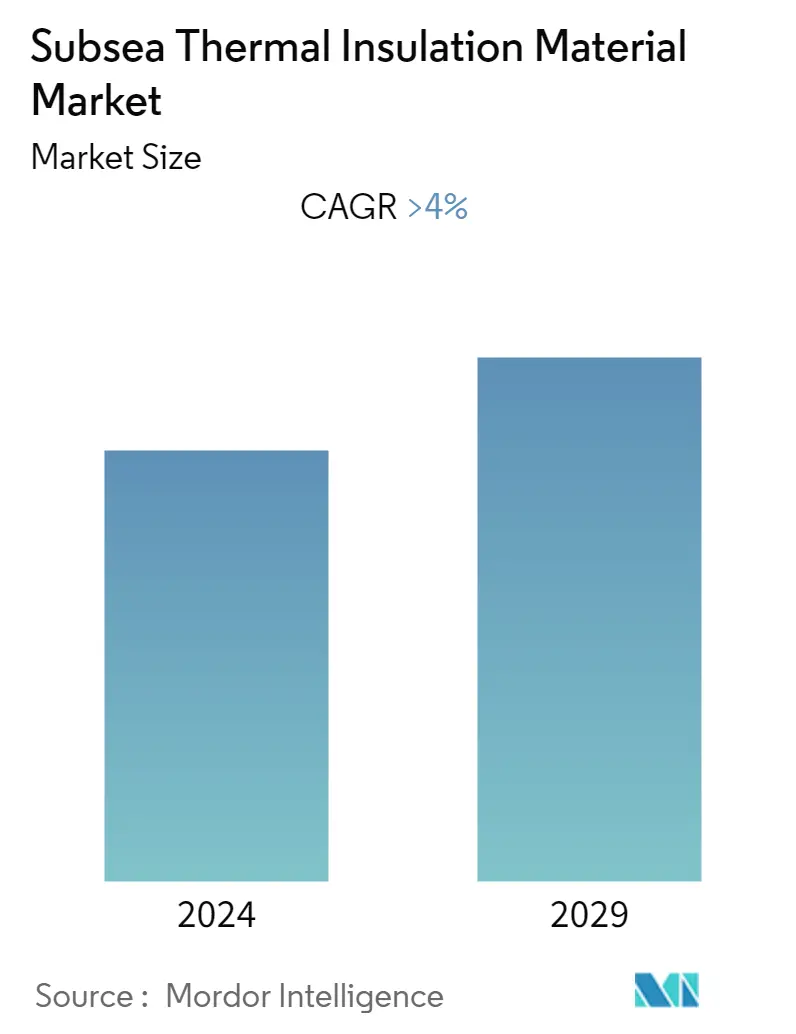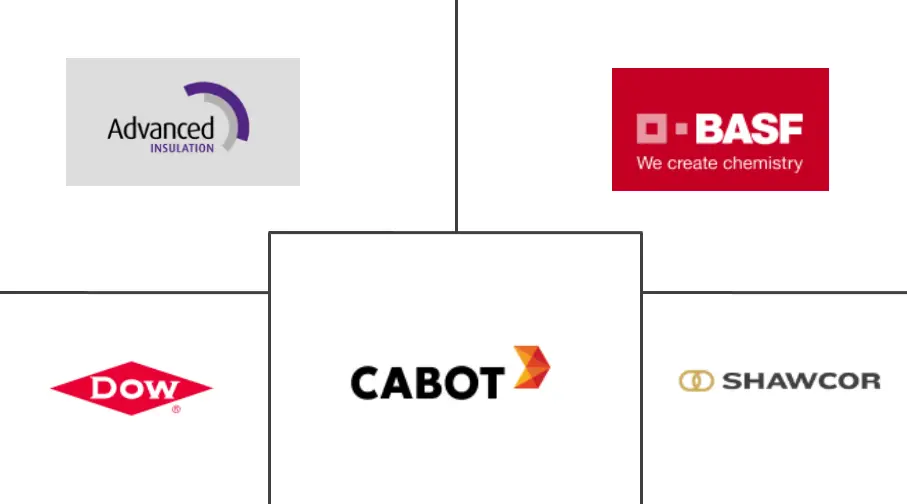Market Size of Subsea Thermal Insulation Material Industry

| Study Period | 2019 - 2029 |
| Base Year For Estimation | 2023 |
| CAGR | 4.00 % |
| Fastest Growing Market | North America |
| Largest Market | Europe |
| Market Concentration | Low |
Major Players
*Disclaimer: Major Players sorted in no particular order |
Subsea Thermal Insulation Material Market Analysis
The market for subsea thermal insulation material is expected to witness a CAGR of approximately 5%, globally, during the forecast period.
- The increase in oil and gas production in the North American region is expected to drive the demand for subsea thermal insulation materials.
- The major restraint for the market studied is the volatile price nature of oil and gas.
- The development of long distance oil and gas transmission lines that will potentially replace tanker transport is expected to provide opportunities to the market.
Subsea Thermal Insulation Material Industry Segmentation
The subsea thermal insulation material market report includes:
| Type | |
| Epoxy | |
| Polypropylene | |
| Polyurethane | |
| Synthetic Rubber | |
| Other Types |
| Application | |
| Line Pipe | |
| Field Joints | |
| Pipe in Pipe | |
| Other Applications |
| Geography | ||||||||
| ||||||||
| ||||||||
| ||||||||
|
Subsea Thermal Insulation Material Market Size Summary
The subsea thermal insulation material market is poised for steady growth, driven by the increasing oil and gas production activities, particularly in North America. This growth is supported by the development of long-distance oil and gas transmission lines, which are expected to replace traditional tanker transport methods. However, the market faces challenges due to the volatile pricing of oil and gas. Subsea thermal insulation is crucial for maintaining pipeline integrity during shutdowns, as temperature drops can lead to clogging issues that affect well productivity. Materials such as polyurethane, polypropylene, epoxies, and synthetic rubbers are utilized for insulation, with polyurethane being the most preferred due to its superior thermal properties and other beneficial characteristics.
North America is anticipated to lead the subsea thermal insulation material market, bolstered by significant pipeline infrastructure and robust natural gas production. The United States, in particular, has a substantial share of announced and planned oil and gas trunk pipelines, with Canada also contributing to the region's strong production figures. This dominance is reflected in the region's high oil and gas output, positioning North America as a key player in the market. The subsea thermal insulation material market is characterized by a fragmented landscape, with several companies, including Advanced Insulation, BASF SE, Cabot Corporation, Dow, and Shawcor, competing for market share.
Subsea Thermal Insulation Material Market Size - Table of Contents
-
1. MARKET DYNAMICS
-
1.1 Drivers
-
1.1.1 Increasing Oil and Gas Production in North America
-
-
1.2 Restraints
-
1.2.1 Volatile Prices of Oil and Gas
-
-
1.3 Industry Value Chain Analysis
-
1.4 Porter's Five Force Analysis
-
1.4.1 Bargaining Power of Suppliers
-
1.4.2 Bargaining Power of Buyers
-
1.4.3 Threat of New Entrants
-
1.4.4 Threat of Substitute Products
-
1.4.5 Degree of Competition
-
-
-
2. MARKET SEGMENTATION
-
2.1 Type
-
2.1.1 Epoxy
-
2.1.2 Polypropylene
-
2.1.3 Polyurethane
-
2.1.4 Synthetic Rubber
-
2.1.5 Other Types
-
-
2.2 Application
-
2.2.1 Line Pipe
-
2.2.2 Field Joints
-
2.2.3 Pipe in Pipe
-
2.2.4 Other Applications
-
-
2.3 Geography
-
2.3.1 North America
-
2.3.1.1 United States
-
2.3.1.2 Canada
-
2.3.1.3 Rest of North America
-
-
2.3.2 Europe
-
2.3.2.1 Germany
-
2.3.2.2 United Kingdom
-
2.3.2.3 Italy
-
2.3.2.4 Russia
-
2.3.2.5 NORDIC Countries
-
2.3.2.6 Rest of Europe
-
-
2.3.3 Asia-Pacific
-
2.3.3.1 China
-
2.3.3.2 Indonesia
-
2.3.3.3 India
-
2.3.3.4 Rest of Asia-Pacific
-
-
2.3.4 Rest of the World
-
2.3.4.1 South America
-
2.3.4.2 Middle East & Africa
-
-
-
Subsea Thermal Insulation Material Market Size FAQs
What is the current Subsea Thermal Insulation Material Market size?
The Subsea Thermal Insulation Material Market is projected to register a CAGR of greater than 4% during the forecast period (2024-2029)
Who are the key players in Subsea Thermal Insulation Material Market?
Advanced Insulation , BASF SE, Cabot Corporation, Dow and Shawcor are the major companies operating in the Subsea Thermal Insulation Material Market.

